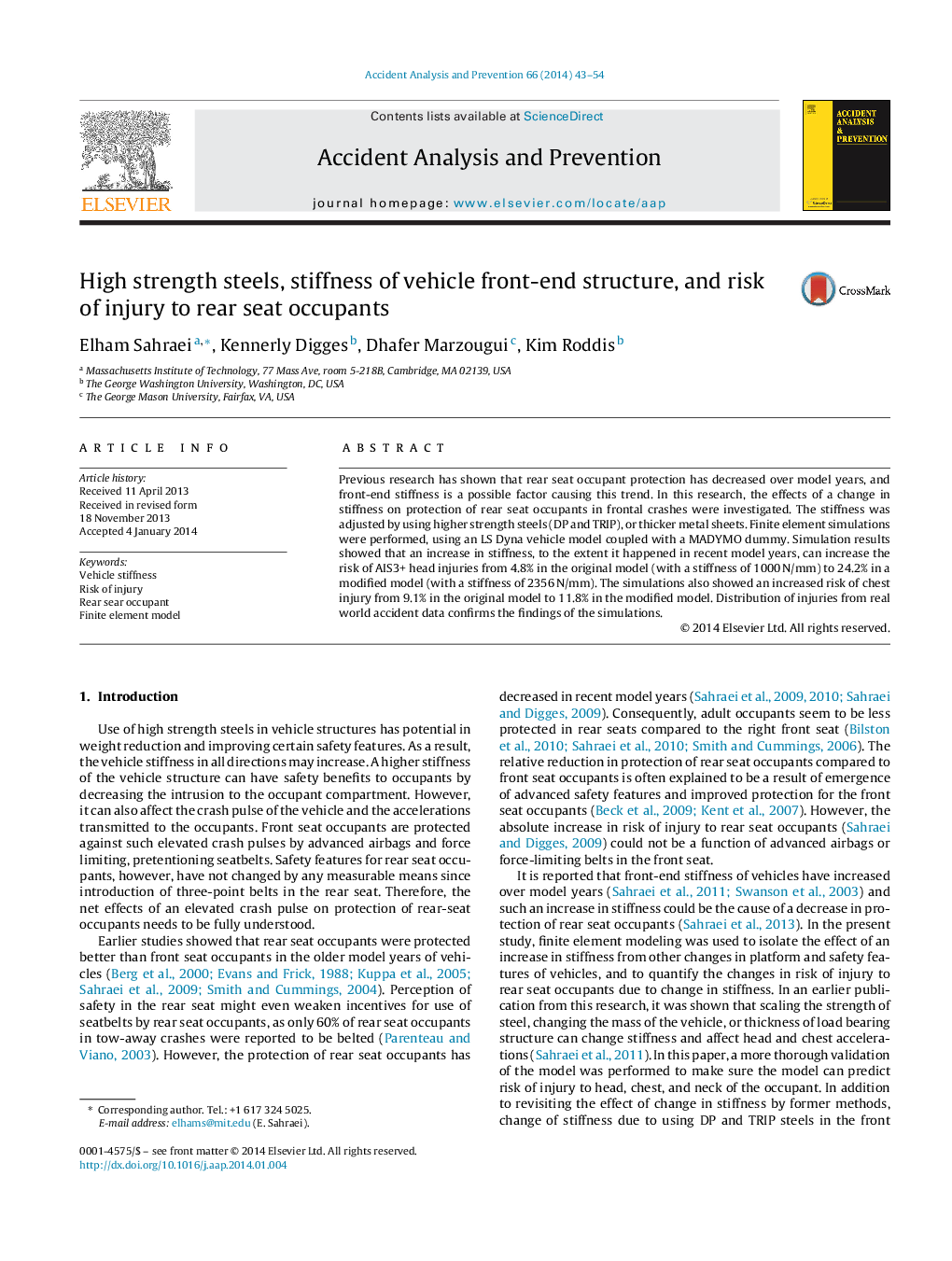| Article ID | Journal | Published Year | Pages | File Type |
|---|---|---|---|---|
| 572368 | Accident Analysis & Prevention | 2014 | 12 Pages |
Abstract
Previous research has shown that rear seat occupant protection has decreased over model years, and front-end stiffness is a possible factor causing this trend. In this research, the effects of a change in stiffness on protection of rear seat occupants in frontal crashes were investigated. The stiffness was adjusted by using higher strength steels (DP and TRIP), or thicker metal sheets. Finite element simulations were performed, using an LS Dyna vehicle model coupled with a MADYMO dummy. Simulation results showed that an increase in stiffness, to the extent it happened in recent model years, can increase the risk of AIS3+ head injuries from 4.8% in the original model (with a stiffness of 1000Â N/mm) to 24.2% in a modified model (with a stiffness of 2356Â N/mm). The simulations also showed an increased risk of chest injury from 9.1% in the original model to 11.8% in the modified model. Distribution of injuries from real world accident data confirms the findings of the simulations.
Keywords
Related Topics
Physical Sciences and Engineering
Chemical Engineering
Chemical Health and Safety
Authors
Elham Sahraei, Kennerly Digges, Dhafer Marzougui, Kim Roddis,
